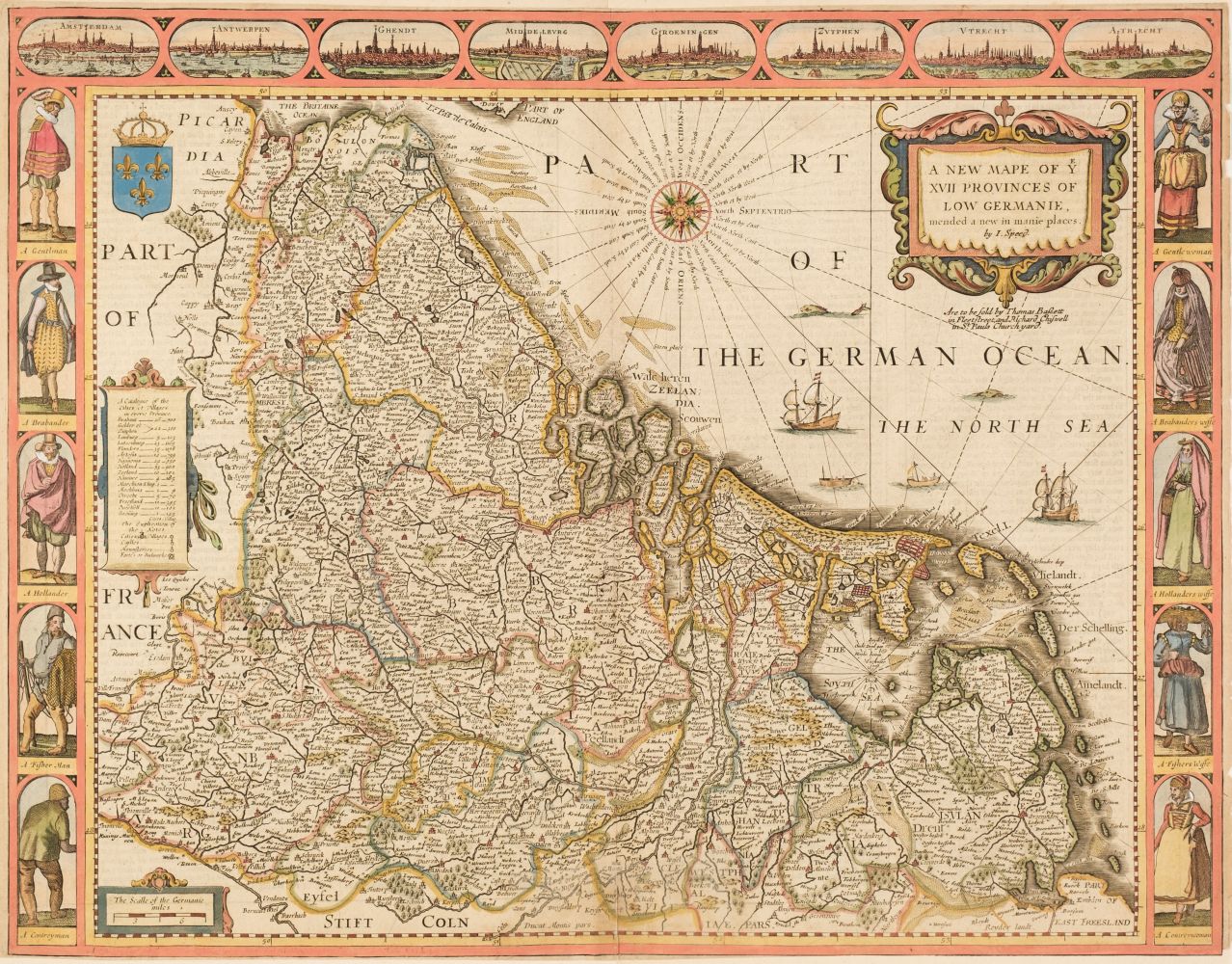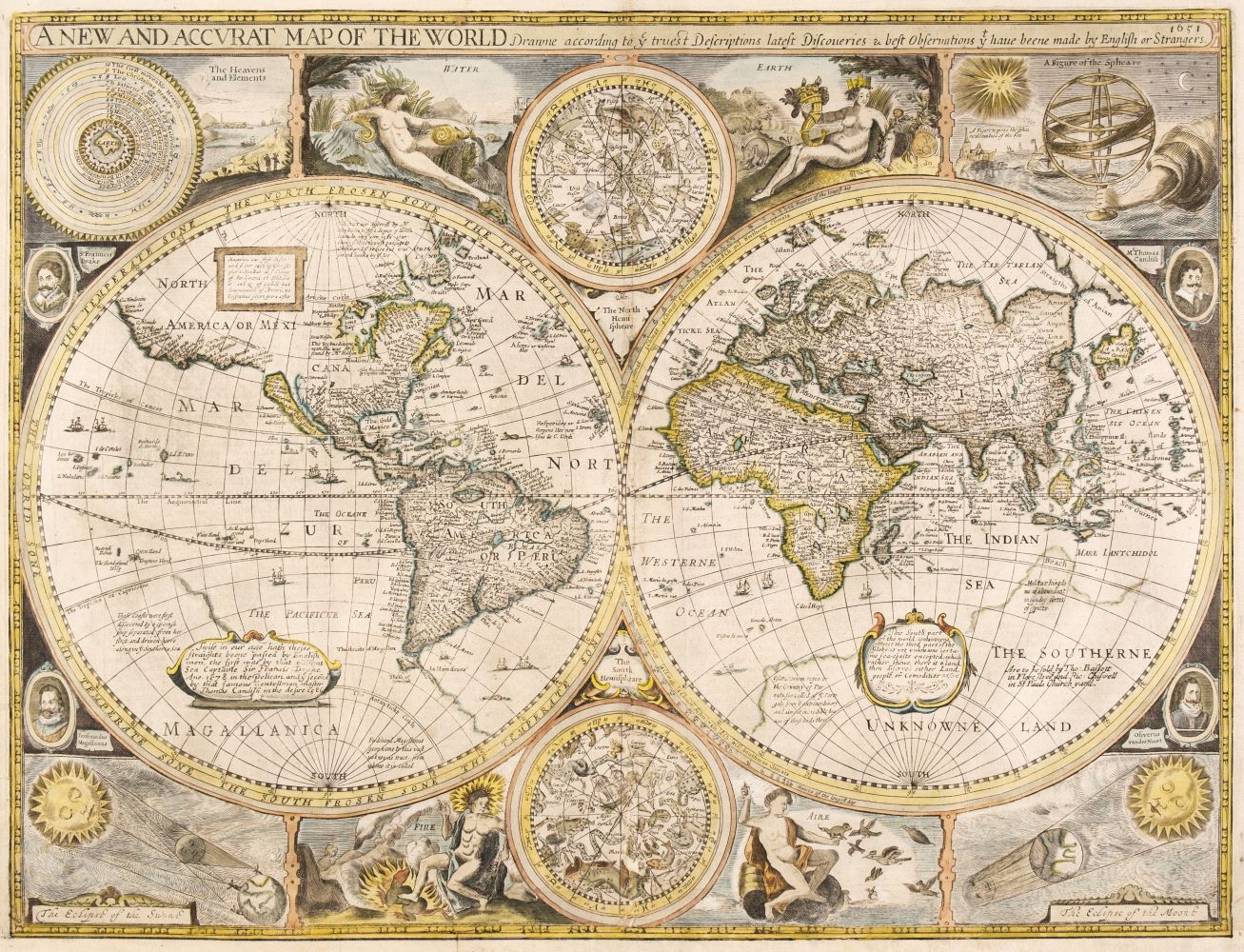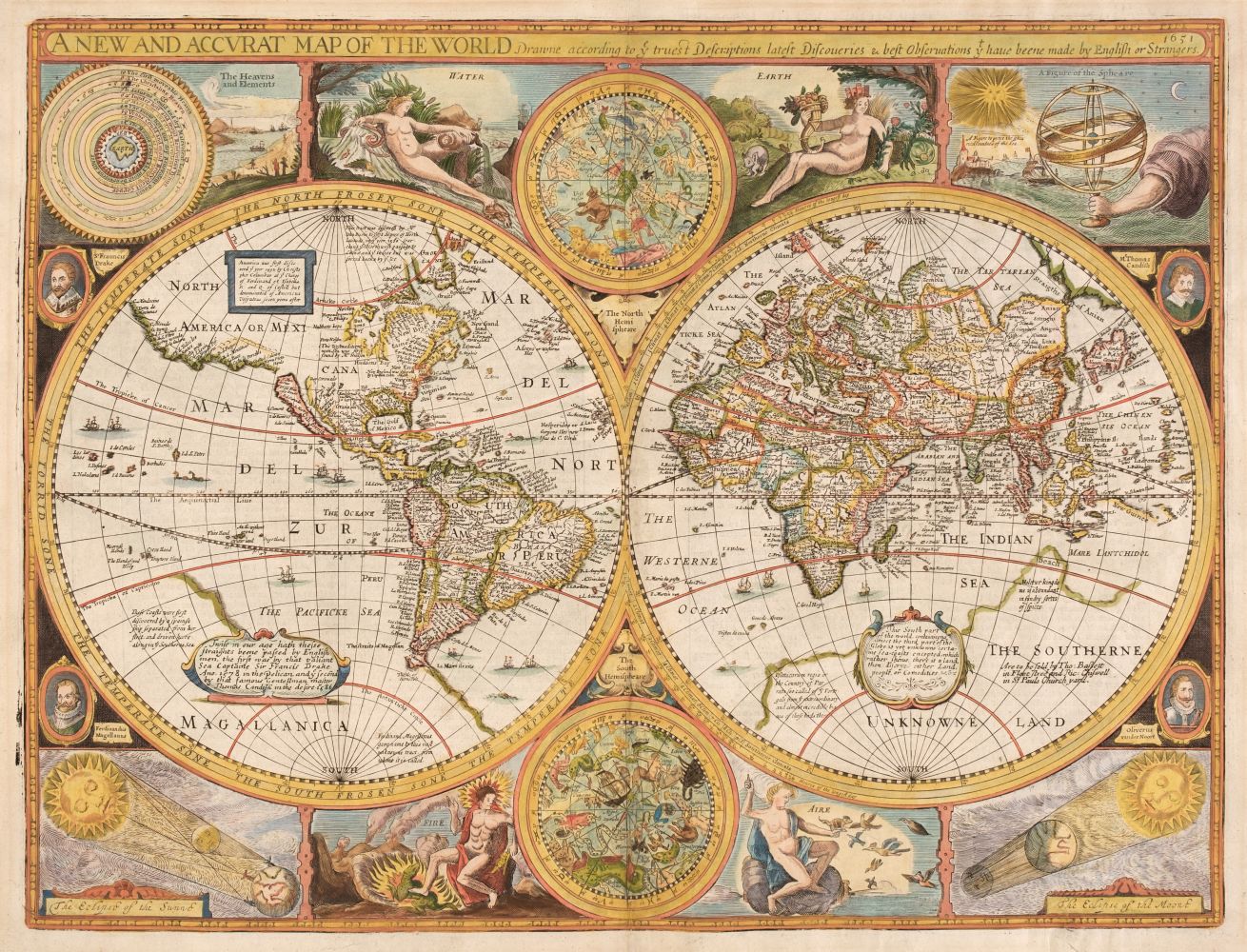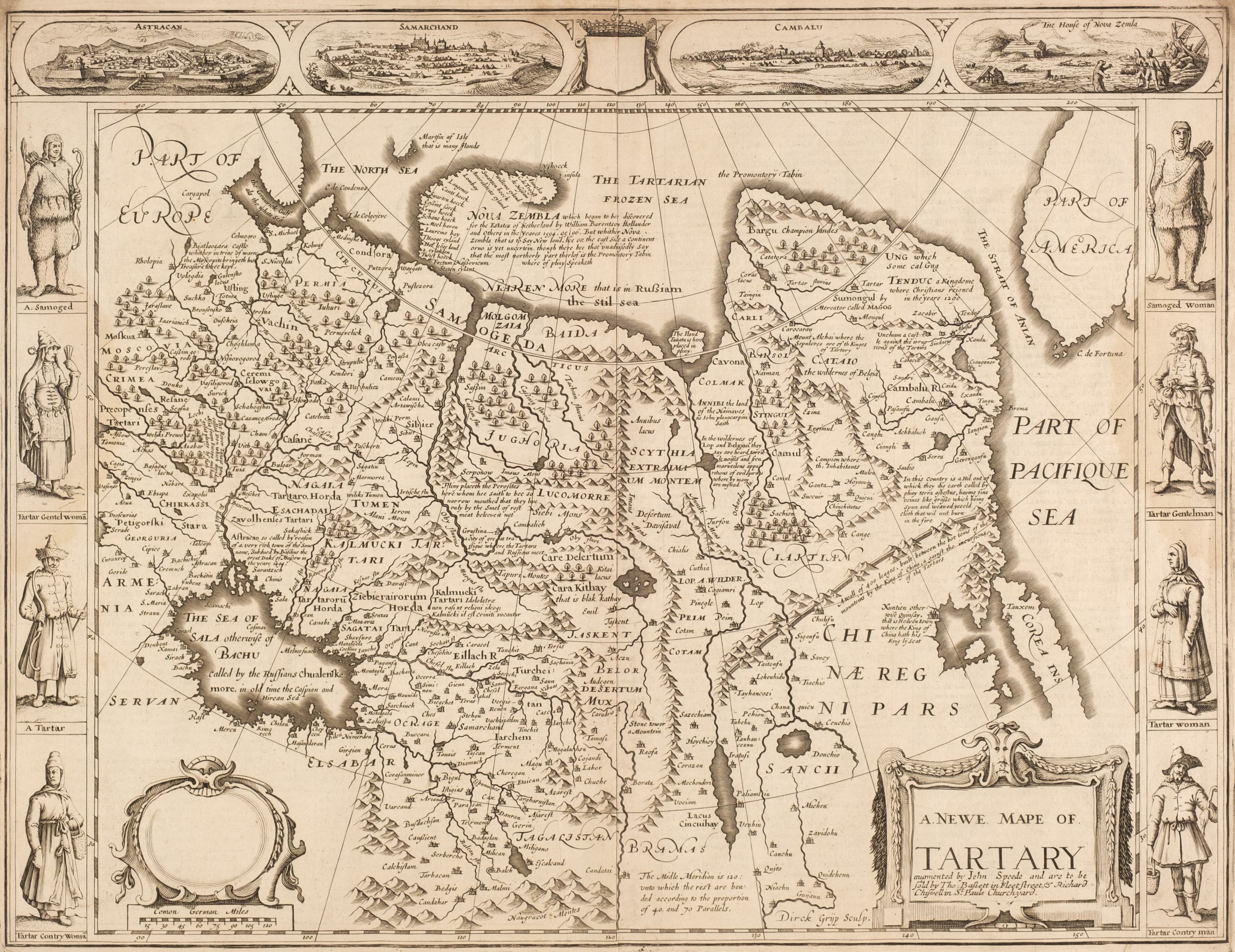A New Description of Carolina .
London: Basset and Chiswell, [1676]. Double page engraved map (15x20 ¼ inches, 385x515 mm). Text on verso. Condition: Light toning, minor edge tears, minor extraneous creases along the centerfold. early map of north carolina based on john lederer's discoveries. This important, early map of North Carolina first appeared in the 1676 edition of Speed's The Theatre of the Empire of Great Britain (accounting for the attribution to him, even though it was accomplished forty years after his death). The map, finely engraved by Francis Lamb, depicts from the mouth of the Chesapeake to St. Augustine, Florida and extends west as far as the Appalachian Mountains. The region is shown with north oriented to the right and cartographically closely follows the famous Lord Proprietors's map of 1672, which was largely based on the discoveries of explorer John Lederer. Lederer had been sent on an expedition over the Blue Ridge Mountains in the hopes of reaching the Pacific Ocean. Unlike the Lord Proprietors's map, Speed's map contains text on verso detailing Lederer's discoveries. Both maps contain anomalies derived from Lederer, including a non-existent lake, a large desert and the depiction of the Piedmont as a largely-underwater savannah. Cumming 77.
A New Description of Carolina .
London: Basset and Chiswell, [1676]. Double page engraved map (15x20 ¼ inches, 385x515 mm). Text on verso. Condition: Light toning, minor edge tears, minor extraneous creases along the centerfold. early map of north carolina based on john lederer's discoveries. This important, early map of North Carolina first appeared in the 1676 edition of Speed's The Theatre of the Empire of Great Britain (accounting for the attribution to him, even though it was accomplished forty years after his death). The map, finely engraved by Francis Lamb, depicts from the mouth of the Chesapeake to St. Augustine, Florida and extends west as far as the Appalachian Mountains. The region is shown with north oriented to the right and cartographically closely follows the famous Lord Proprietors's map of 1672, which was largely based on the discoveries of explorer John Lederer. Lederer had been sent on an expedition over the Blue Ridge Mountains in the hopes of reaching the Pacific Ocean. Unlike the Lord Proprietors's map, Speed's map contains text on verso detailing Lederer's discoveries. Both maps contain anomalies derived from Lederer, including a non-existent lake, a large desert and the depiction of the Piedmont as a largely-underwater savannah. Cumming 77.














Testen Sie LotSearch und seine Premium-Features 7 Tage - ohne Kosten!
Lassen Sie sich automatisch über neue Objekte in kommenden Auktionen benachrichtigen.
Suchauftrag anlegen